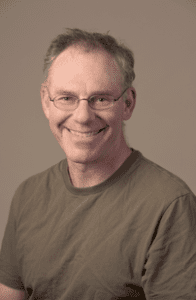Meet Dr. Herschlag from Stanford University
The Chemistry Department Seminar Program is bringing Dr. Daniel Herschlag from the Biochemistry Department at Stanford University School of Medicine to UCF this coming Monday, September 10, 2012, at 4 PM in BA 119.
Abstract
Enzymes lie at the center of biology, providing the enormous rate enhancements and exquisite specificity needed for life as we know it. While our understanding of the basic structure and chemistry of enzymes has advanced profoundly in the last half century, the problem of developing a quantitative understanding of catalysis has been difficult, and we cannot yet effectively engineer new enzymes. I will describe multi-disciplinary approaches to dissect the catalysis by and enzymatic properties of the model enzyme ketosteroid isomerase. Our results extend the ability to understand energetics via site-directed mutagenesis, introduce cutting edge physical and organic chemistry approaches to enzyme mechanism, and dissect catalytic strategies in ways that have hitherto not been possible.
Biography
Dan began undergraduate studies at the University of Michigan with a concentration in Mathematics. After taking time off to travel, he attended SUNY Binghamton, where he co-edited the campus literary magazine and graduated with a B.S. in Biochemistry (1982). He spent a year doing biochemistry research and taking graduate Quantum Mechanics at the University of Minnesota before beginning graduate studies at Brandeis University under the direction of W.P. Jencks. There, using the tools of physical organic chemistry, he studied phosphoryl transfer reactions. This work has contributed to our foundational understanding of this most-important class of biological reactions. He received his Ph.D. in Biochemistry in 1988. In his 3 years of postdoctoral research at the University of Colorado under Tom Cech, Dan studied the mechanism of the recently discovered RNA enzymes — ribozymes. He is credited with introducing rigorous kinetic and mechanistic approaches to this field.
Dan joined the faculty of the Stanford Biochemistry Department in 1993, where he has remained. His contributions, along with collaborators and co-workers, include the following:
• Rigorous functional dissection of group I and hammerhead ribozymes, including the development of new mechanistic approaches.
• Demonstration of protein-facilitated RNA catalysis and advancing of the ‘RNA Chaperone’ hypothesis.
• Coining of the term ‘Catalytic Promiscuity’ and identifying the implications of promiscuity for the evolution and design of new enzymes, as well as the mechanistic analysis of enzyme function applied to the Alkaline Phosphatase superfamily.
• The energetic dissection of hydrogen bonds, determination of their physical properties in model and enzymatic systems, and assessment of the nature of their contributions to enzymatic catalysis.
• The kinetic dissection of complex biological processes and systems via traditional and novel pre-steady state kinetic methods.
• The first demonstration of macromolecular folding and unfolding at the single molecule level by fluorescence, carried out with the Tetrahymena group I intron in collaboration with Steve Chu.
• Uncovering electrostatic collapse in RNA folding and subsequently developing systems to allow the first rigorous experimental tests of popular electrostatic theories.
• The parsing of energetic contributions to folding of complex RNAs in terms of basic physical forces and the dissection of cooperativity in RNA folding.
• Providing the first rigorous evidence for the helix nucleation model for nucleic acid duplex formation, from single molecule optical force experiments with Steve Block.
• Establishing the existence of extensive coordination of the gene expression program, via the association of mRNAs that code for proteins with related functions or similar localization with common RNA binding proteins; this work, in collaboration with Pat Brown, provided clear evidence for Jack Keene’s RNA operon hypothesis.
Dan has been involved in the development of new graduate courses at Stanford that cross traditional disciplinary boundaries between chemistry, physics and biology. He has trained numerous students and postdocs from a variety of backgrounds who have excelled in academia and other pursuits.
Recent Awards
ASBMB William Rose Award (2010)
AAAS Fellow (2005)
NIH Merit Award (2002 – present)
Cope Scholar Award from the American Chemical Society (2000)
Established Investigator of the American Heart Association (1998-2002)
For more information, please visit Professor Herschlag’s Home page: http://cmgm.stanford.edu/biochem/herschlag/index.html

